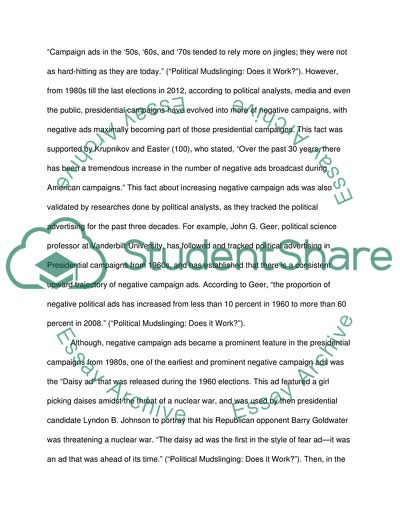Cite this document
(“Negative campaign ads in presidential elections Essay”, n.d.)
Retrieved de https://studentshare.org/social-science/1645076-negative-campaign-ads-in-presidential-elections
Retrieved de https://studentshare.org/social-science/1645076-negative-campaign-ads-in-presidential-elections
(Negative Campaign Ads in Presidential Elections Essay)
https://studentshare.org/social-science/1645076-negative-campaign-ads-in-presidential-elections.
https://studentshare.org/social-science/1645076-negative-campaign-ads-in-presidential-elections.
“Negative Campaign Ads in Presidential Elections Essay”, n.d. https://studentshare.org/social-science/1645076-negative-campaign-ads-in-presidential-elections.


